Dr. Harveen Kaur
Dr. Satnam Singh
Combined role of Arogyam-DRT and lifestyle modifications in the effective management of upper respiratory tract allergies
Dr. Harveen Kaur and Dr. Satnam Singh
Objective
The purpose of the presented work is to assess the role of lifestyle management and an indigenously developed polyherbal Ayurvedic formulation, Arogyam-DRT in treating upper respiratory tract allergies i.e. nasal allergy or allergic rhinitis.
Materials and methods
Arogyam-DRT powder is a combination of Chitrak (Plumbago zylenica), Haridra (Curcuma longa), Praval Pishti (Coral calcium), Kalmegh chura (Andrographis paniculata), Pippali (Piper longum), Kant kari (Solanum virginianum), Amla (Phyllanthus emblica), Pushkarmool (Inula racemosa), and Sitopaladi churna, all constituting 1 gm of dose. Raw material for all the ingredients was purchased and converted to Arogyam-DRT formulation by SVM Pharmaceuticals, Talwara, Hoshiarpur (Punjab). All of these ingredients were pulverized and passed through sieve no. 60 to render a uniform size to prevent any demixing while subsequent handling. The powdered ingredients were mixed thoroughly and filled in plastic bulk containers provided with a 5 gm tared spoon. These boxes were labelled with all desirable directions and precautions to be taken. The product has been named as Arogyma-DRT by innovators for which the prescribed dosage regimen is 5 gm thrice a day (tds). Along with the said treatment, patients were also advised some changes in their lifestyles. The components of lifestyle modification include-
a) Patients were advised to instill 2-3 drops of lukewarm cow’s ghee in nostrils every morning. They were advised to apply cow’s ghee specifically obtained from Sahiwal cow belonging to Zebu cattle breed.
b) They were also advised to do Tivar Bhastrika 15-20 minutes twice a day at least.
c) Nasal rinsing with saline water was also suggested to patients before bed.
Inclusion criteria: One of the most positive aspects of study was inclusion of patients of a broader age group who had already undergone surgeries of nose. The criteria for inclusion of the patients under study were as follows:
• The patients who had already undergone surgical interventions were also the part of study.
• Patients of all age group varying from 5 to 80 years of age were included for investigations.
For statistical treatment to find out a meaningful correlation between the tested regimen of treatment and the recovery of patients, Chi Square test was applied.
Results
The above said combination of polyherbs i.e. Arogyam-DRT, Indian breed Sahewal cow’s ghee in nostrils and Tivar Bhastrika pranayam in 500 patients produced convincing results.
Approximately 50% of the patients under treatment got cured permanently, 31% patients were relieved but later on recurrence of disease was observed (making a total of 81% relieved), whereas 19% patients didn’t respond to above said combination therapy and hence showed no results.
Treatment No. of Patients
Favourable Not Favourable Total
Arogyam-DRT (new treatment) 405 55 460
Conventional 95 40 135
Total 500 95 595
Since the population size under study was large, Chi-square test was applied to treat and analyze the data statistically. The null and alternative hypotheses were applied as follows-
Null hypothesis: there is no significant difference between the new and conventional treatment.
Alternate hypothesis: there is significant difference between the new and conventional treatment.
O E O-E (O-E)² (O-E)²/E
405 387 18 340 0.88
95 113 18 340 3.00
55 73 18 340 4.63
40 22 18 340 15.78
Total 24.30
The calculated value of Chi-Square was 24.30 whereas the table value was noted down as 3.84. As the calculated value of Chi-square was more than the table value, null hypothesis got rejected. A significant difference between the new and conventional treatment was observed statistically which proved Arogyam-DRT treatment superior to the conventional treatment for the effective management of upper respiratory tract allergies. Hence the test was found to be highly significant.
The results are attributed to the following phytoconstituents:
The roots and leaves of Plumbago zylenica contain plumbagin as a major component. It has been identified as significant bioactive component responsible for its anti-allergic activity.
Curcumin alleviates nasal symptoms (sneezing and rhinorrhea) and nasal congestion through reduction of nasal airflow resistance by exerting diverse immunomodulatory effects, including suppression of interleukins (IL-4, IL-8), and tumor necrosis factor α (TNF-α) and increased production of IL-10 and soluble intercellular adhesion molecule.
Phyllanthus emblica and Piper longum are reported to have immunomodulatory properties that are helpful in managing respiratory allergic disorders, especially in the paediatric age group.
Andrographolide present in Kalmegh chura has the anti-allergic activity which appears to be due to immunomodulation.
The mast cell stabilizing (antihistaminic) activity can be attributed to a great extent due to the presence of piperine in the formulation which has already been reported to possess this activity.
All of these herbs thus make an effective polyherbal therapy for the management of allergic disorders associated with respiratory tract.
Conclusion
It can be inferred from the results obtained that the formulation developed by Arogyam combined with life style modifications has shown positive results in getting nasal allergy patients permanently relieved from their sufferings. Furthermore, this unique polyherbal combination can prove to be a boom in the treatment of respiratory tract allergic disorders.

Rosenberg Ayurveda und Wellness-Consulting AG
Europäische Akademie für Ayurveda Schweiz
Büelstrasse 17
CH-6052 Hergiswil NW
info@ayurveda-symposium.org
Newsletter
* Ich habe die Datenschutzerklärung zur Kenntnis genommen. Ich stimme zu, dass meine Angaben und Daten zur Beantwortung meiner Anfrage elektronisch erhoben und gespeichert werden.

2024 © Rosenberg Ayurveda Akademie gGmbH